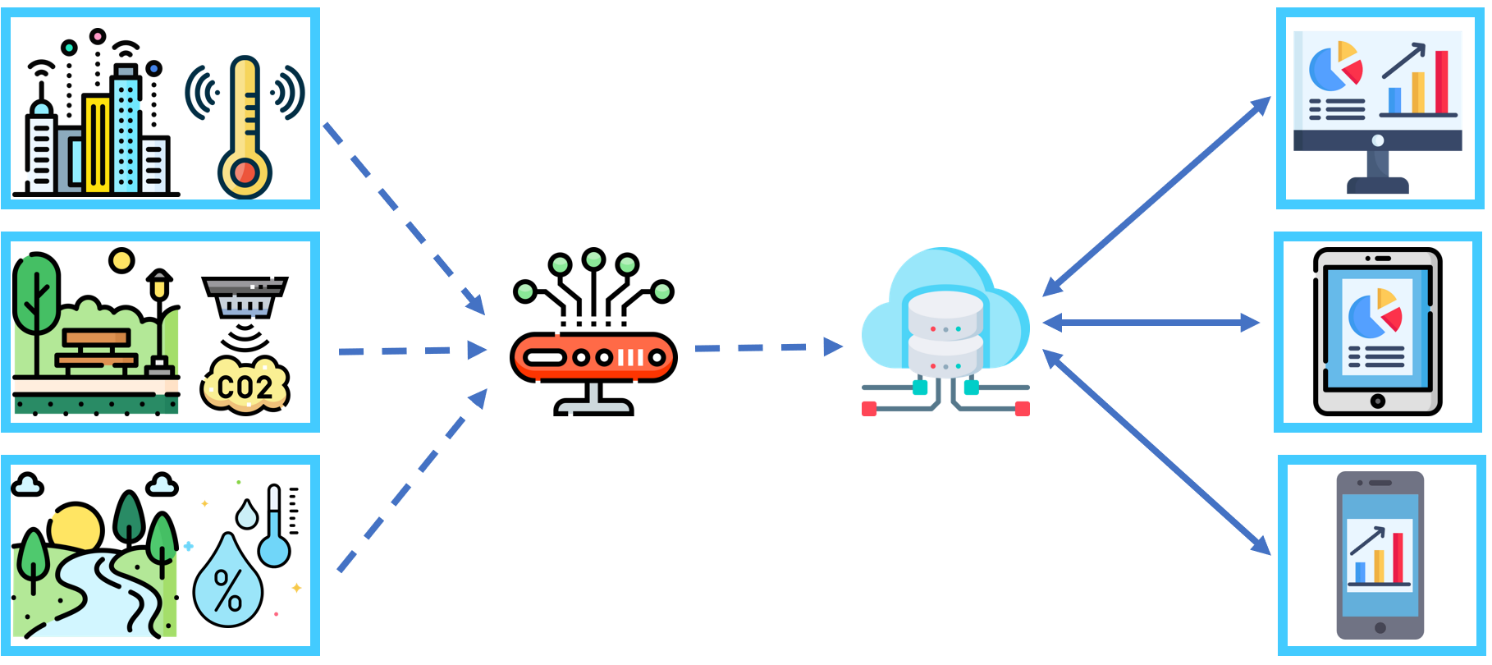Smart city platform for analyzing the impact of foot and car traffic on the environment.
The weather and environmental conditions affect the ways and means of transportation chosen by city dwellers. This has an impact on the quality of water, air, and noise pollution. To monitor and analyze the correlation between indicators, as well as to forecast changes, special platforms and tools are implemented.
What infrastructure do smart cities create to collect data?
One European city, together with telecommunications equipment and sensor manufacturers, has created a Smart City system consisting of:
- Sensors for analyzing:
- air quality using gathered information on the presence of CO 2, NO 2, O 3, and various particles;
- water pH and conductivity;
- noise level.
- Data transmission networks.
- Cloud server for data collection and processing.
- Equipment for analyzing traffic.

Interaction of Smart City system elements
How does the smart city platform work?
The Smart City system elements are interconnected through various wireless technologies. The collected data is transmitted to the cloud server for analysis and results storage, which are displayed on user devices depending on customer needs.
How do the elements interact with each other?
Organization and management of Smart City infrastructure is done using software created by Epol Soft. This software remotely monitors and manages equipment.

Software for equipment support
What is the information used for?
Smart city platform allows one to monitor the dynamics of environmental indicators, as well as:
More about Epol Soft’s solutions for smart cities can be found at the here.
Want to estimate the budget and timeline for creating a Smart City system? Fill out the form here.
